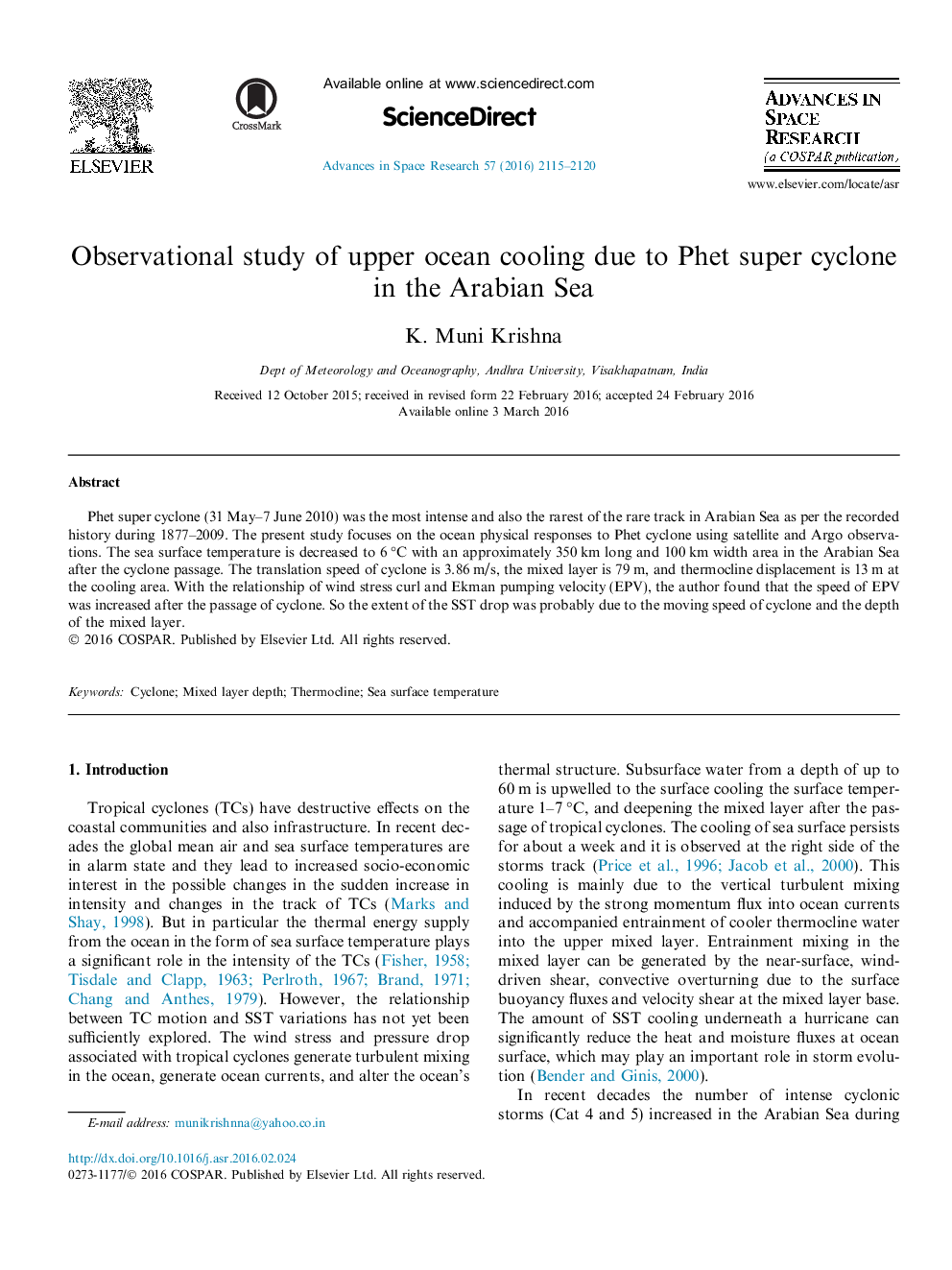| Article ID | Journal | Published Year | Pages | File Type |
|---|---|---|---|---|
| 1763425 | Advances in Space Research | 2016 | 6 Pages |
Abstract
Phet super cyclone (31 May-7 June 2010) was the most intense and also the rarest of the rare track in Arabian Sea as per the recorded history during 1877-2009. The present study focuses on the ocean physical responses to Phet cyclone using satellite and Argo observations. The sea surface temperature is decreased to 6 °C with an approximately 350 km long and 100 km width area in the Arabian Sea after the cyclone passage. The translation speed of cyclone is 3.86 m/s, the mixed layer is 79 m, and thermocline displacement is 13 m at the cooling area. With the relationship of wind stress curl and Ekman pumping velocity (EPV), the author found that the speed of EPV was increased after the passage of cyclone. So the extent of the SST drop was probably due to the moving speed of cyclone and the depth of the mixed layer.
Related Topics
Physical Sciences and Engineering
Earth and Planetary Sciences
Space and Planetary Science
Authors
K. Muni Krishna,
